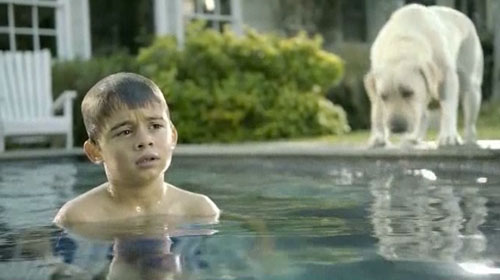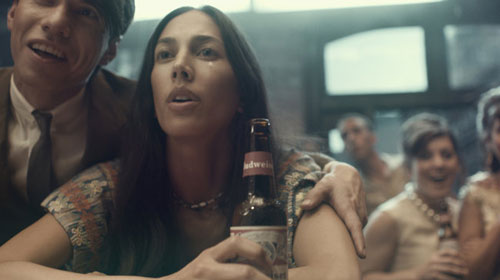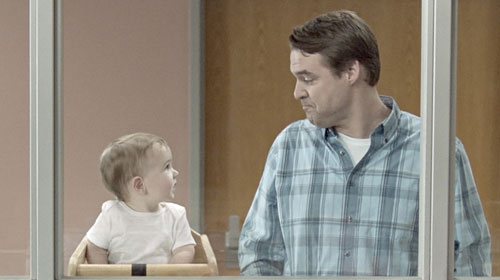Some of the Superbowl ads, presented by Adweek. You can follow the stories on the Superbowl Adweek hub. Which one is your favourite and why? I kind of fancy the Coke polarbears. Maybe I´m just a girl, but it signals light and happiness, joy and play. Not too complicated, but still cute.
2nd Story Software1

Agency: J.W. Morton and Associates, Cedar Rapids, Iowa
Creative: One :30 in the fourth quarter. The makers of TaxACT will emphasize that the TaxACT Free Federal Edition tax-preparation software is free for everyone.

Agency: J.W. Morton and Associates, Cedar Rapids, Iowa
Creative: One :30 in the fourth quarter. The makers of TaxACT will emphasize that the TaxACT Free Federal Edition tax-preparation software is free for everyone.
Acura 2
Agency: To be determined
Creative: Creative is not yet known.
Creative: Creative is not yet known.
Audi3
Agency: Venables Bell & Partners, San Francisco
Creative: The :60 above will air in the first break after kickoff. The 2013 Audi S7's LED headlights prove deadly for young vampires partying in the woods.
Agency: Venables Bell & Partners, San Francisco
Creative: The :60 above will air in the first break after kickoff. The 2013 Audi S7's LED headlights prove deadly for young vampires partying in the woods.
Anheuser-Busch InBev4

Agency: Anomaly, mcgarrybowen, Translation, all New York; Cannonball, St. Louis, Mo.
Creative: Two stylish :30s for Bud Light Platinum by Translation. One :60 for Bud Light by mcgarrybowen, one :30 by Cannonball. Two sweeping, historical, connected :60s for Budweiser by Anomaly, with the Clydesdales.

Agency: Anomaly, mcgarrybowen, Translation, all New York; Cannonball, St. Louis, Mo.
Creative: Two stylish :30s for Bud Light Platinum by Translation. One :60 for Bud Light by mcgarrybowen, one :30 by Cannonball. Two sweeping, historical, connected :60s for Budweiser by Anomaly, with the Clydesdales.
Best Buy5
Agency: Crispin Porter + Bogusky, Boulder, Colo.
Creative: One :30 focusing on a new product or service.
Creative: One :30 focusing on a new product or service.
Bridgestone6
Agency: The Richards Group, Dallas
Creative: Teaser spot above. Two :30s in the second and third quarters. A football, basketball, bowling ball and puck made of Bridgestone tire material change the sports world. Tim Duncan, Deion Sanders, Steve Nash and Troy Aikman star, among others.
Agency: The Richards Group, Dallas
Creative: Teaser spot above. Two :30s in the second and third quarters. A football, basketball, bowling ball and puck made of Bridgestone tire material change the sports world. Tim Duncan, Deion Sanders, Steve Nash and Troy Aikman star, among others.
CareerBuilder7
Agency: In-house
Creative: The :30 above. The brand's famous chimps make a business trip hell for a sad-sack worker, who could use a new job.
Agency: In-house
Creative: The :30 above. The brand's famous chimps make a business trip hell for a sad-sack worker, who could use a new job.
Cars.com8
Agency: DDB, Chicago
Creative: The :30 above will air during the third quarter. A man sprouts a second excitable, soul-singing head after an inspirational visit to the auto site.
Agency: DDB, Chicago
Creative: The :30 above will air during the third quarter. A man sprouts a second excitable, soul-singing head after an inspirational visit to the auto site.
Century 219
Agency: Red Tettemer + Partners, Philadelphia
Creative: Teaser spot above. One :30 in the third quarter starring Donald Trump, Deion Sanders and Apolo Ohno, with Century 21 agents beating each icon at his own game.
Agency: Red Tettemer + Partners, Philadelphia
Creative: Teaser spot above. One :30 in the third quarter starring Donald Trump, Deion Sanders and Apolo Ohno, with Century 21 agents beating each icon at his own game.
Chrysler10
Agency: To be determined
Creative: One 60-second spot. Model is not yet clear.
Creative: One 60-second spot. Model is not yet clear.
Coca-Cola11
Agency: Wieden + Kennedy, Portland, Ore.
Creative: The polar bears return—one rooting for the Patriots, one for the Giants. An introductory :30 in the first quarter will be followed by one of two different :60s in the second (one of them is posted above), depending on which team is winning.
Agency: Wieden + Kennedy, Portland, Ore.
Creative: The polar bears return—one rooting for the Patriots, one for the Giants. An introductory :30 in the first quarter will be followed by one of two different :60s in the second (one of them is posted above), depending on which team is winning.
Dannon12

Agency: None (crowdsourced by Poptent, San Clemente, Calif.)
Creative: One :30 in the third quarter for Dannon Oikos Greek yogurt, starring John Stamos.

Agency: None (crowdsourced by Poptent, San Clemente, Calif.)
Creative: One :30 in the third quarter for Dannon Oikos Greek yogurt, starring John Stamos.
Doritos13
Agency: None (consumer-generated)
Creative: Two :30s—the top vote-getters from among the five finalists in the brand's Crash the Super Bowl contest. One of the finalists is posted above.
Agency: None (consumer-generated)
Creative: Two :30s—the top vote-getters from among the five finalists in the brand's Crash the Super Bowl contest. One of the finalists is posted above.
E*Trade14

Agency: Grey, New York
Creative: One :30. The E*Trade baby reassures a new dad about planning for his newborn daughter's future, with help from E*Trade Financial Consultants.

Agency: Grey, New York
Creative: One :30. The E*Trade baby reassures a new dad about planning for his newborn daughter's future, with help from E*Trade Financial Consultants.
General Motors15
Agency: Goodby, Silverstein & Partners, San Francisco, and Fallon, Minneapolis
Creative: Two Chevrolet ads from Goodby, for the Silverado and Sonic, and one consumer-generated spot (above) for the Chevy Camaro. Plus, one Cadillac spot for the ATS sport sedan, by Fallon.
Agency: Goodby, Silverstein & Partners, San Francisco, and Fallon, Minneapolis
Creative: Two Chevrolet ads from Goodby, for the Silverado and Sonic, and one consumer-generated spot (above) for the Chevy Camaro. Plus, one Cadillac spot for the ATS sport sedan, by Fallon.










